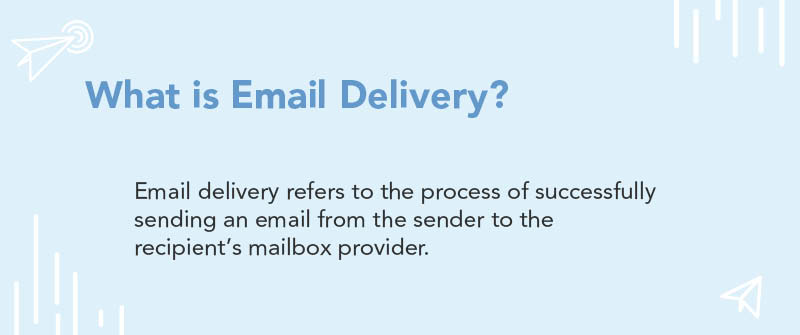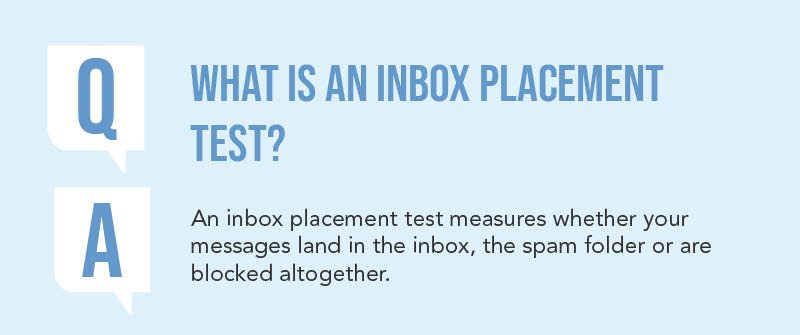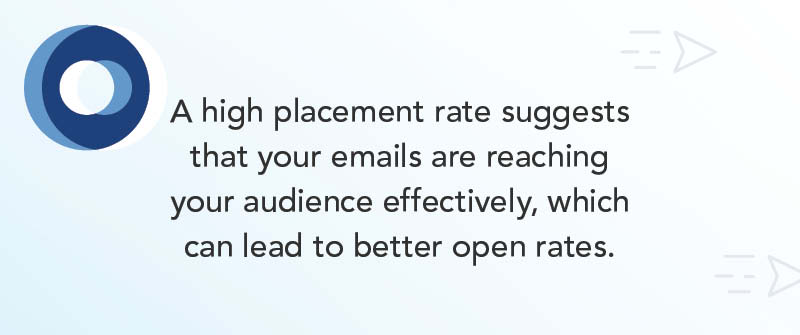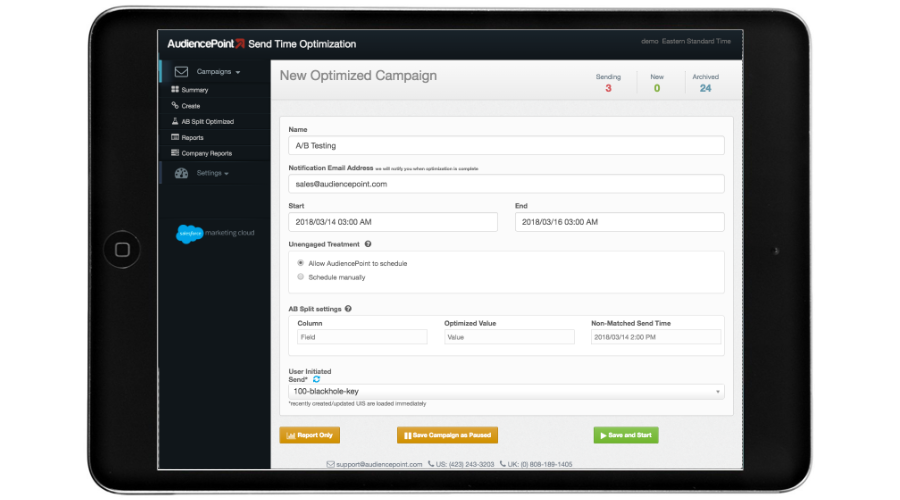AudiencePoint is thrilled to announce our new integration with Klaviyo! AudiencePoint is looking for partners to pilot our...
What Is The Difference Between Email Delivery And Deliverability?
In the realm of email marketing, understanding the nuances between email delivery and deliverability and inbox placement is crucial for optimizing email performance. While these terms are often used interchangeably, they refer to distinct aspects of email campaigning that every digital marketer should comprehend.

Define Email Delivery
Email delivery refers to the process of successfully sending an email from the sender to the recipient’s mailbox provider. Essentially, it’s about whether the email reaches the intended server. This process does not guarantee that the email will land in the user’s inbox; it is merely that it has passed through the initial gateway and is now considered ‘delivered’ by the system. This metric gives us the first indication that an email is capable of being seen by the user, thus kicking off our deeper analysis of its engagement potential.
Define Email Deliverability
Email deliverability, on the other hand, goes a step further. It assesses the likelihood of an email not just being delivered but safely landing in the main inbox of the recipient rather than the spam folder or being completely rejected. Deliverability is influenced by several factors, including the sender’s reputation, content quality, and recipient behavior. It’s a key measure of success in email marketing as it directly impacts engagement rates and conversions. A strong sender reputation and other factors significantly affect inbox placement, determining whether emails reach the primary inbox or get filtered into promotional or spam folders.
Key Differences Between Delivery and Deliverability
The primary difference between delivery and deliverability lies in their scope and impact on email performance. While delivery is about reaching the server, deliverability concerns where the email lands once it gets there—ideally, the inbox rather than a hidden tab. Each serves as an indicator of different stages of the email journey, with deliverability providing a deeper understanding of potential engagement rates and overall campaign success.
Impact of Deliverability on Email Marketing
High deliverability rates are indicative of healthy email campaigns and lead directly to improved user engagement and increased ROI. Poor deliverability can result in emails being flagged as spam, negatively affecting email performance and sender reputation. Thus, focusing on improving deliverability by adopting best practices like authenticating emails, maintaining clean sending lists, how to build email lists, and creating quality, consent-based content is essential for any ambitious email marketer.
Factors Affecting Deliverability and Spam Folder Placement
A multitude of factors can influence deliverability. These include your sender reputation, the content quality of your emails, and the engagement level of your subscribers. Email service providers (ESPs) use unique algorithms to sort incoming emails into various folders like Inbox, Spam, or Promotions. Ensuring the technical aspects, such as proper authentication through SPF, DKIM, and DMARC, is vital. Additionally, monitoring your bounce rates, list hygiene, and ensuring relevance in your email content are key areas to focus on for optimized deliverability.
Importance of Inbox Placement in Deliverability
Achieving high inbox placement rates is crucial as it directly affects the success of your email campaigns. When emails consistently land in the inbox, the likelihood of higher open rates, click-through rates, and conversions increase significantly, enhancing the overall email success of your campaigns.
Strategies to Improve Email Deliverability
Adopting best practices can significantly enhance your email deliverability. Start by maintaining clean email lists and removing inactive subscribers. Segmenting your audience and personalizing your emails can enhance engagement and lower spam complaints. Regularly testing and adjusting your email content for relevance and freshness can also keep your emails landing directly in the inbox. Additionally, inbox placement tracking is crucial for understanding where your emails land—whether in the main inbox or the spam folder. Tools like Allegrow can assist in monitoring and optimizing inbox placement, ensuring higher engagement and conversion rates in your cold email outreach campaigns.
What Is An Inbox Placement Test?
For email marketers and digital marketing professionals, understanding inbox placement is crucial for optimizing email campaigns. An inbox placement test serves a vital role in measuring not just the delivery rate of emails but their placement, providing insights into whether your messages land in the inbox, the spam folder, the junk folder, or are blocked altogether. Avoiding the junk folder is essential to ensure higher engagement rates and maintain a good sender reputation.

Definition of Inbox Placement Test
An inbox placement test examines the final destination of your email campaigns once they reach the subscriber’s email service provider. Unlike basic delivery tracking, which only tells you if an email was accepted by the server, a placement test determines precisely where the email is positioned. Different mailbox providers use unique algorithms to evaluate emails, impacting deliverability based on user engagement, spam complaints, and the sender’s reputation with these providers. Understanding these nuances is critical for improving email performance.
Purpose of Conducting an Inbox Placement Test
The primary purpose of an inbox placement test is to gather actionable insights about your email’s journey from sender to recipient. Conducting such tests enables marketers to determine and fix issues affecting email deliverability. It assesses how various ISPs treat emails coming from your domain, thus helping pinpoint potential barriers to successful email campaigns. Ensuring that emails reach the primary inbox is crucial for higher engagement, as it increases the likelihood that recipients will see and interact with your messages.
How to Conduct an Inbox Placement Test
Conducting an inbox placement test typically involves using specialized software tools that simulate email sending to seed lists containing addresses at major ISPs. These tools analyze whether the emails land in the inbox, are spam, or fail to deliver. Spam filters play a crucial role in this process by determining the quality and delivery of email messages, ensuring that only relevant and engaging content reaches recipients’ inboxes. Such tests can highlight problems like authentication issues or problematic content, allowing for prompt corrective actions.
Interpreting Test Results From Inbox Placement Test
Once an inbox placement test is conducted, interpreting the results is essential. Results show the exact metrics of where your emails appear in the recipient’s mailboxes. Emails that frequently land in spam folders indicate problems with the sender reputation, authentication, or message content. Ensuring a high inbox placement rate translates directly to higher email engagement and can ensure your campaigns effectively reach your targeted audience.
What Is Email Inbox Placement Rate?
Definition of Inbox Placement Rate
In the world of email marketing, the inbox placement rate is a critical metric that indicates the percentage of your emails that successfully make it to the recipient’s inboxes rather than getting filtered into the spam folder. Unlike simple delivery rates—which only show emails that don’t bounce—inbox placement rate provides a more nuanced view of your email’s success in reaching the intended audience’s inbox.
Significance of Measuring Inbox Placement Rate
Understanding and analyzing your inbox placement rate is essential for assessing email effectiveness. A high placement rate suggests that your emails are reaching your audience effectively, which can lead to better open rates and, ultimately, increased engagement and conversions. Conversely, a low inbox placement rate can signify potential issues with your email content, sender reputation, or list quality, providing you with valuable insights for optimization.

How to Calculate Inbox Placement Rate
Calculating the inbox placement rate involves dividing the number of emails that land in the recipient’s inbox by the total number of emails sent (excluding bounces) and then multiplying by 100 to obtain a percentage. For example, if you send 1,000 emails and 900 of them reach the inbox, your inbox placement rate would be 90%.
Ways to Optimize Inbox Placement Rate
Improving your inbox placement rate hinges on a combination of strategic practices. Regularly cleaning your email list, personalizing emails, maintaining a good sender reputation, and conducting consistent email testing are some effective strategies. Additionally, employing A/B testing and optimizing your email’s design and content for engagement can also play a substantial role in enhancing your placement rate.
Gain unprecedented insights into your recipients’ inbox behaviors with AudiencePoint, the premier email engagement platform. Increase engagement, enhance deliverability, and elevate your conversion rates with our state-of-the-art email deliverability and spam testing tool. Contact the AudiencePoint team today!





